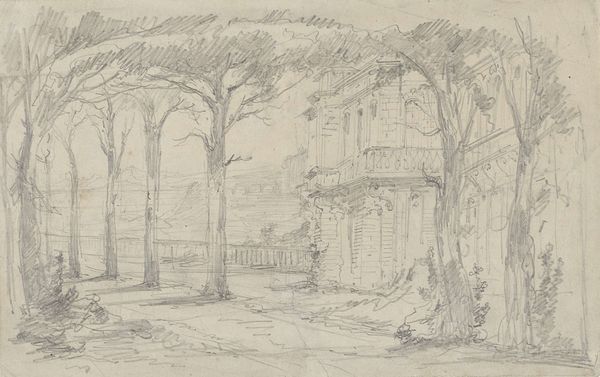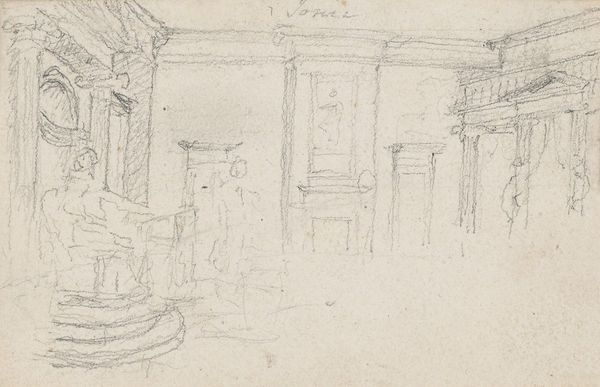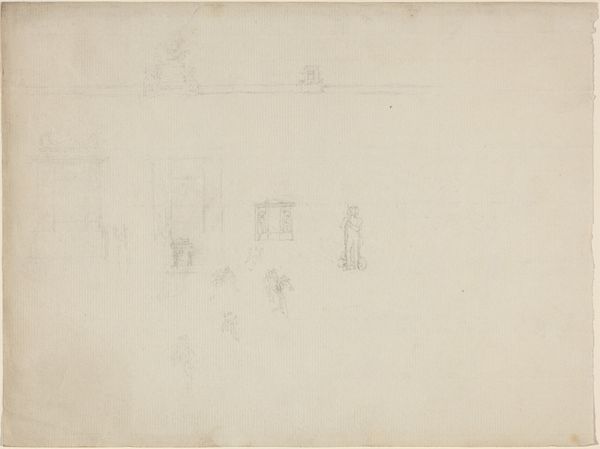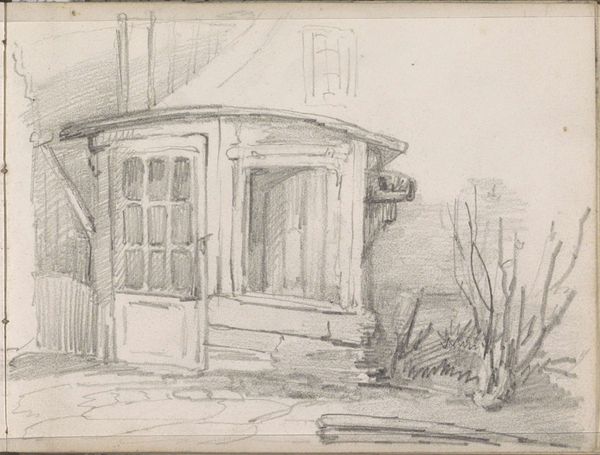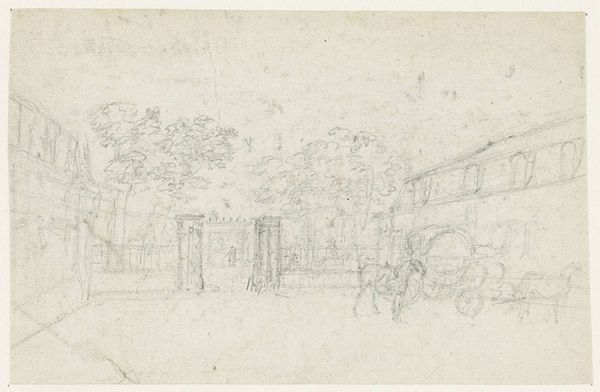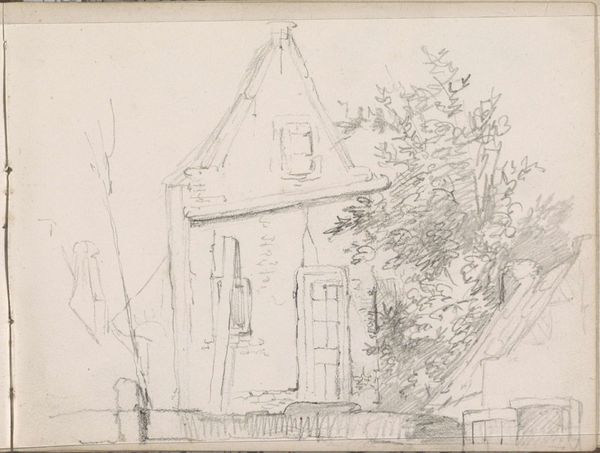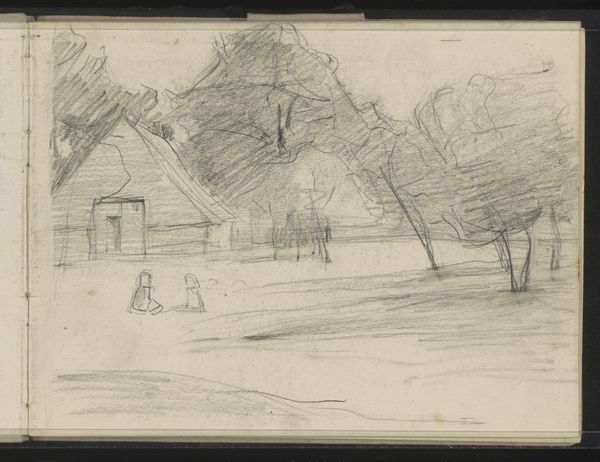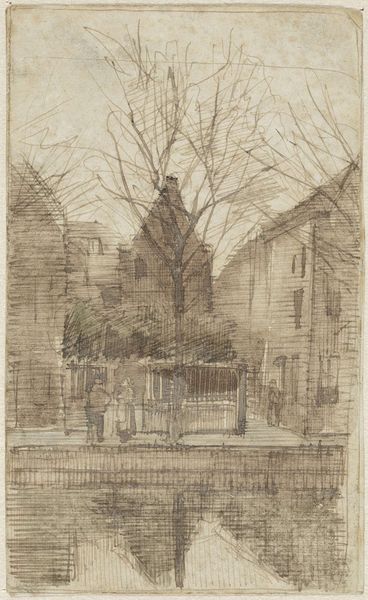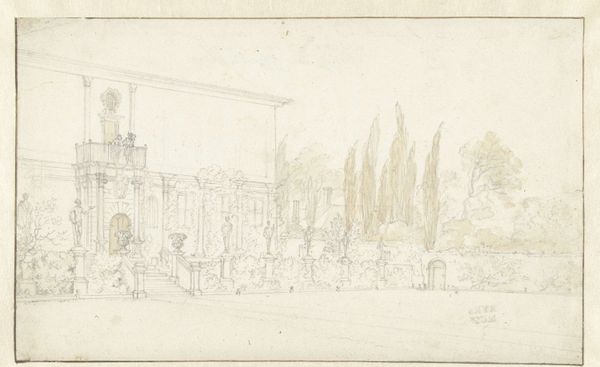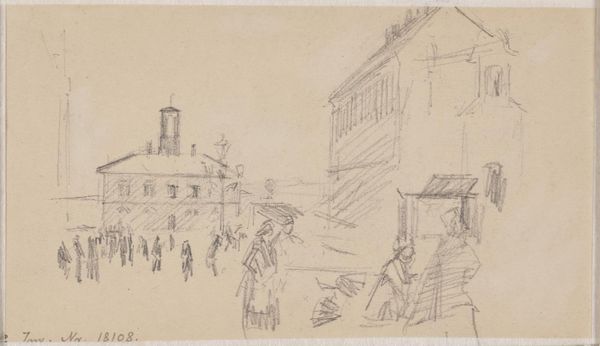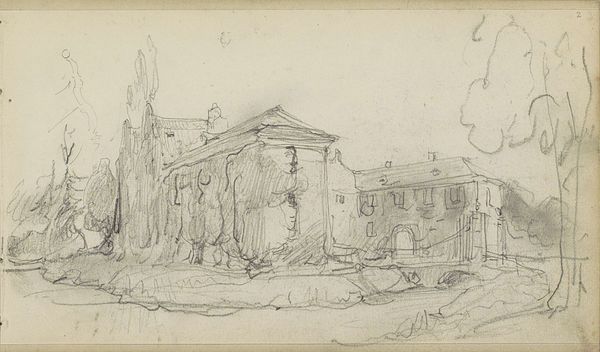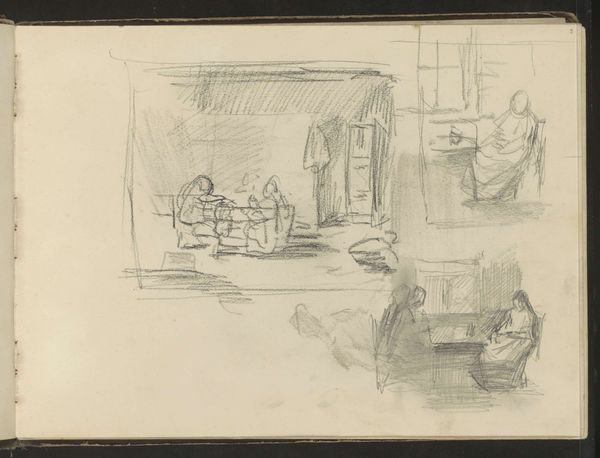
drawing, pen
#
drawing
#
impressionism
#
pen
#
cityscape
#
realism
Copyright: Public Domain: Artvee
Editor: Here we have James Abbott McNeill Whistler's "Doorway, Gray’s Inn," created around 1886-1888 using pen. It's so delicate; I find the image almost dreamlike because of the softness of the pen strokes. What do you make of this piece? Curator: What immediately strikes me is Whistler's interest in capturing a specific urban moment. Gray's Inn, being one of the Inns of Court in London, was historically and still is a place of legal education and profession. By focusing not on grand court scenes but on a doorway and everyday street life, what do you think Whistler might be suggesting about the institution itself? Editor: Perhaps he's trying to humanize it? The children playing certainly soften the rigid image that might come to mind when we think of lawyers and courts. It's almost like he's showing us the institution's impact on the community, not just the legal world. Curator: Precisely. And consider the context of late 19th century London, a time of rapid industrialization and social change. Whistler, often associated with the Aesthetic movement, seems to be turning towards a Realist depiction of city life, even subtly critiquing or at least commenting on the role of tradition in a modernizing world. Does this change your view of his "impressionistic" style tag? Editor: Definitely! Knowing that background gives a new layer to the pen strokes – it's not just capturing a visual impression, but a specific social one, too. I came in seeing a simple cityscape, but now I appreciate its subtle commentary on law and society in Victorian London. Curator: Indeed, seeing art as situated within specific power structures and societal shifts enriches our understanding. The 'how' and 'why' an artwork gains its place in art history becomes a more political and complex investigation. Editor: Absolutely, I’ll remember to think about the wider context. Thanks!
Comments
No comments
Be the first to comment and join the conversation on the ultimate creative platform.
